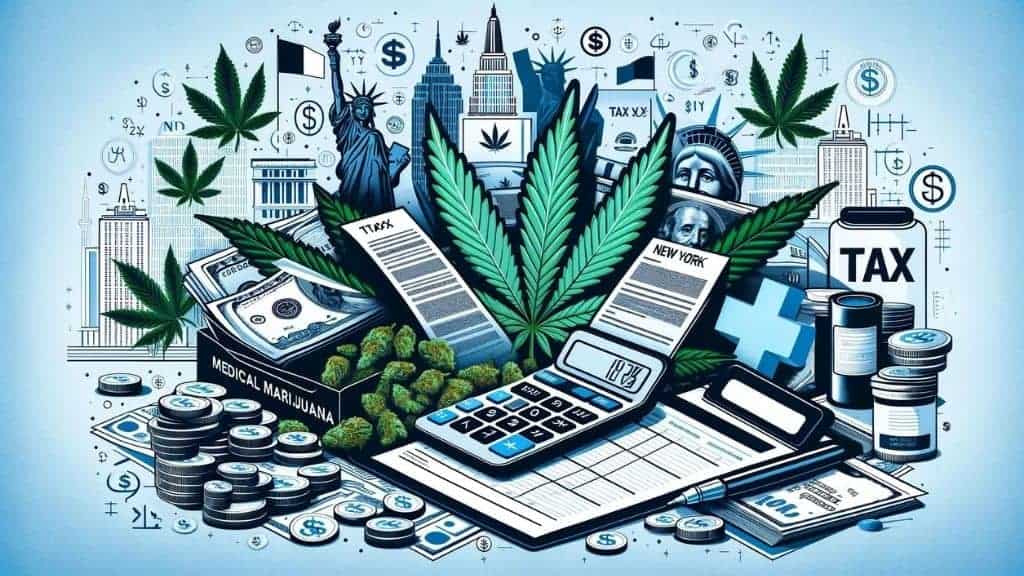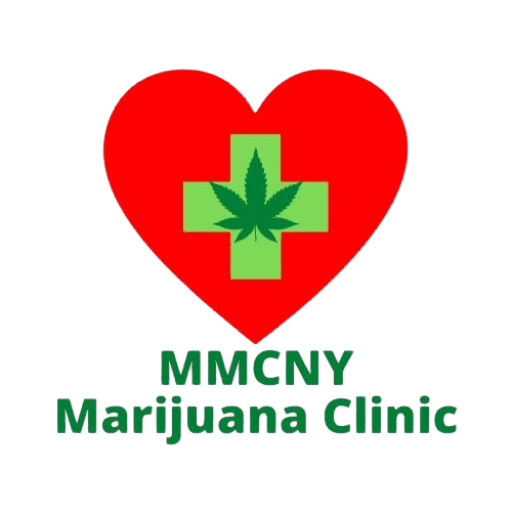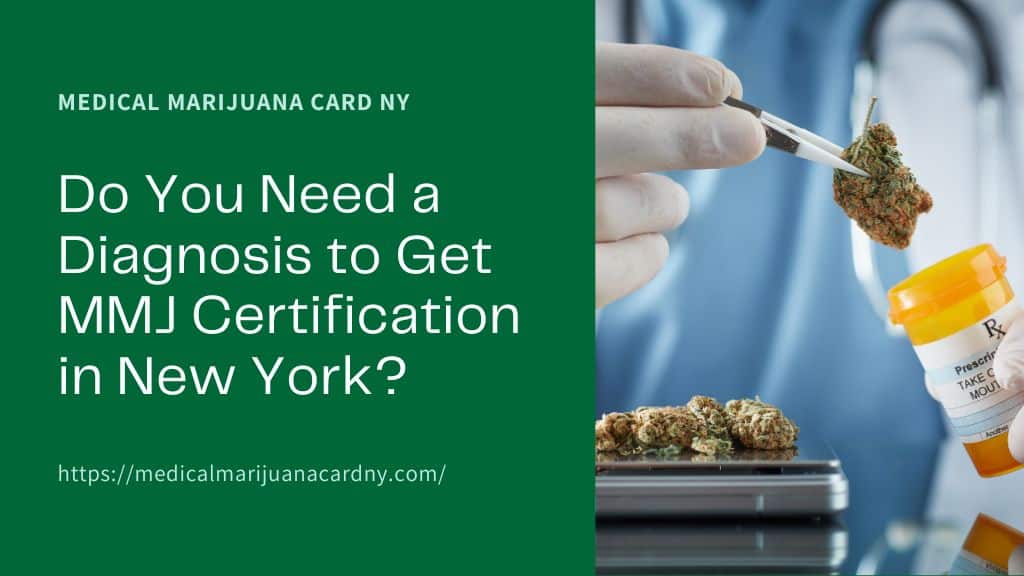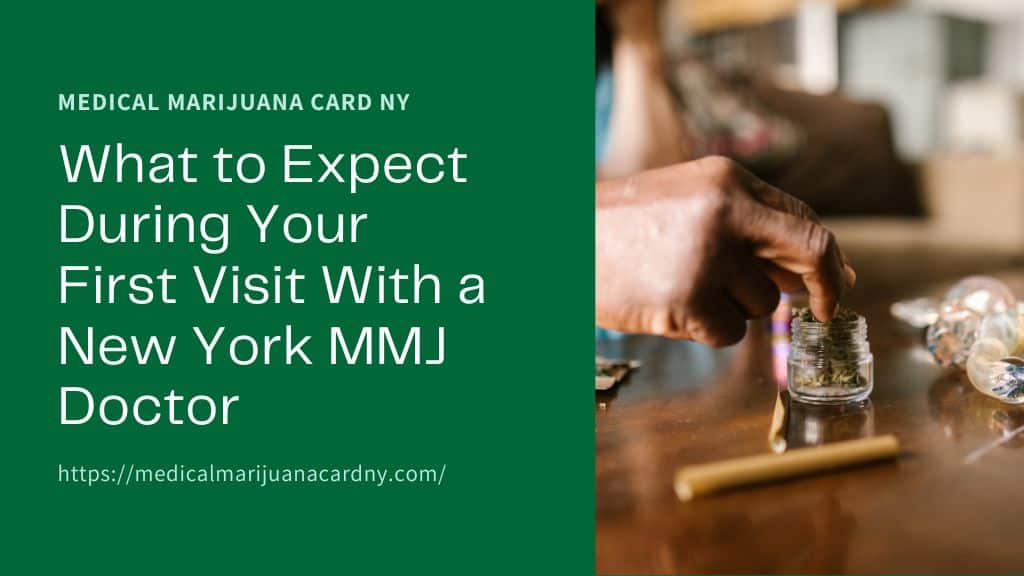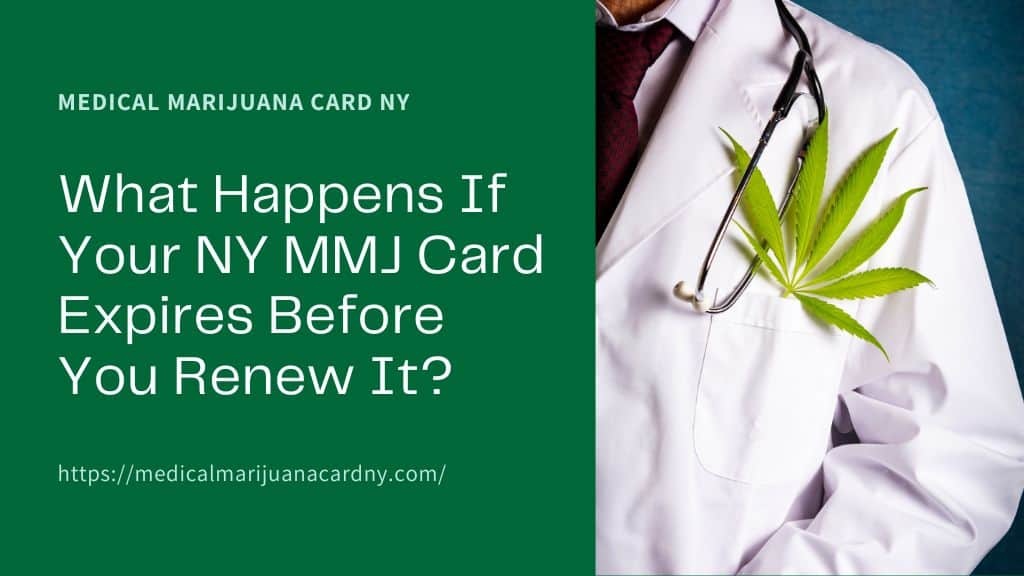In New York, medical marijuana taxation reflects a blend of state commitment to healthcare and a burgeoning legal cannabis market. The state imposes a 7% excise tax on the gross receipts from medical cannabis sold or furnished by registered organizations to certified patients or caregivers. This tax is directed at the sellers rather than the buyers, indicating a regulatory approach designed to streamline the financial burden on patients relying on medical marijuana for therapeutic purposes.
Additionally, for cannabis products, the state levies an excise tax based on the THC content: $0.005 per milligram for cannabis flower, $0.008 per milligram for concentrates, and $0.03 per milligram for consumables, alongside a 13% retail sales tax collected by retailers from consumers. This nuanced taxation structure aims to support both state and local governments financially, while also considering the affordability and accessibility of medical cannabis for patients.
Understanding the taxation of medical marijuana in New York is crucial for both patients and providers. It informs about potential costs, compliance, and the state’s efforts to balance between generating revenue and ensuring medical marijuana’s accessibility.
With ongoing discussions around taxation and the legal framework, staying informed can empower patients to navigate the medical marijuana landscape effectively. Our blog aims to demystify these complexities, offering insights into how New York’s tax policies impact the medical marijuana community and encouraging further exploration into this vital topic.
Table of Contents
ToggleIntroduction
What is Medical Marijuana, and Who Can Use It in New York?
Medical marijuana refers to the use of the marijuana plant or its chemicals to treat diseases or conditions. It’s the same product as recreational marijuana, but it’s taken for medical purposes. The marijuana plant contains more than 100 different chemicals called cannabinoids, with each having a different effect on the body. Delta-9-tetrahydrocannabinol (THC) and cannabidiol (CBD) are the main chemicals used in medicine. THC also produces the “high” people feel when they smoke marijuana or eat foods containing it.
In New York, the landscape of medical marijuana usage has evolved significantly. As of March 2023, the state simplified access to medical marijuana. Patients seeking medical marijuana no longer need to obtain a medical marijuana card. Instead, they require a certification from a doctor who is qualified to prescribe medical marijuana. This certification effectively registers the patient with the state, providing them with a unique registration ID number. This number allows patients to purchase medical marijuana products from registered dispensaries.
The criteria for obtaining medical marijuana certification in New York have broadened over time. Initially, the state had a specific list of qualifying medical conditions. However, as of 2022, the state has removed the fixed list, empowering certified medical marijuana (MMJ) doctors to evaluate and decide which patients could benefit from medical marijuana, based on their professional judgment. This change has made the process more personalized and patient-centric, focusing on the individual medical needs rather than a rigid list of conditions.
Why Is Medical Marijuana Taxed in New York?
The taxation of medical marijuana in New York is a topic of much discussion, primarily because it intersects with healthcare, legal, and economic considerations. The state imposes taxes on medical marijuana to generate revenue, which can support various public services, including those related to public health and safety. Taxation is also a way for the state to exercise control over the burgeoning medical marijuana industry, ensuring that it operates within a regulated and safe framework.
As part of its regulatory framework, New York levies a 7% excise tax on the gross receipts from the sale of medical marijuana by registered organizations. This tax is directed at the sellers rather than directly burdening the patients. Additionally, with the legalization of recreational marijuana use as of March 31, 2021, the state has introduced a structured taxation system based on the product type and THC content, aiming to balance between generating necessary revenue and keeping medical marijuana accessible to patients who need it.
The tax structure not only reflects New York’s commitment to public welfare and safety but also its approach to managing the medical and recreational marijuana markets in ways that benefit the community at large. The revenue collected from these taxes supports state initiatives, including drug education, treatment programs, and law enforcement efforts related to drug use and trafficking.
Understanding Medical Marijuana Taxation in New York
How Is Medical Marijuana Taxed in New York?
In New York, the taxation of medical marijuana has been designed to support both the state’s fiscal needs and the operational framework of its medical marijuana program. Unlike some other states, New York has adopted a specific tax structure for medical marijuana, distinct from recreational marijuana, reflecting its commitment to ensuring that patients have affordable access to the treatments they need.
The state imposes an excise tax on the gross receipts from the sale of medical marijuana by registered organizations to certified patients or their caregivers. This approach means that the tax is levied on the sale transaction itself, rather than on the product. It’s an important distinction that helps to streamline the financial burden on patients, making medical marijuana a more accessible option for those who require it for therapeutic purposes.
What Are the Current Tax Rates for Medical Marijuana in New York?
The current tax rate for medical marijuana in New York is set at 7% of the gross receipts from the sale. This rate is applied to the total amount charged by registered organizations – essentially, the dispensaries – to the patients or their designated caregivers. It’s a direct tax on the sale, meaning that the organizations responsible for selling the medical marijuana products are the ones who pay this tax to the state.
This tax rate is carefully calibrated to balance the need for state revenue with the imperative to keep medical marijuana affordable for patients. By setting the rate at a modest 7%, New York aims to ensure that the tax does not become a prohibitive cost that could discourage patients from accessing the medical marijuana they need.
Who Is Responsible for Paying the Tax on Medical Marijuana?
The responsibility for paying the tax on medical marijuana in New York falls on the registered organizations that sell the product. These organizations are required to collect the tax at the point of sale and then remit it to the state. This system ensures that the tax collection process is streamlined and efficient, minimizing the administrative burden on patients.
It’s important to note that while the registered organizations are responsible for paying the tax, the economic impact of the tax may be reflected in the pricing of medical marijuana products. However, the state’s regulatory framework aims to ensure that this impact does not significantly hinder patient access to necessary treatments.
Legal Framework
What Laws Govern the Taxation of Medical Marijuana in New York?
In New York, the taxation of medical marijuana is governed by a comprehensive legal framework designed to ensure that the state’s medical marijuana program operates effectively and responsibly. This framework encompasses various laws and regulations that detail how medical marijuana is taxed, who is responsible for paying these taxes, and how the funds collected are utilized.
One of the key pieces of legislation that set the stage for the current medical marijuana taxation structure is the Compassionate Care Act (CCA). Enacted in 2014, the CCA legalized medical marijuana in New York and established the initial guidelines for its regulation and taxation. Under the CCA, the New York State Department of Health (DOH) was tasked with overseeing the medical marijuana program, including the implementation of tax policies related to medical marijuana sales.
The specific tax rate applied to medical marijuana sales in New York is outlined in the state’s fiscal policies. As of my last update, medical marijuana sales are subjected to a 7% excise tax on the gross receipts from the sale or furnishing of medical marijuana by registered organizations to certified patients or their caregivers. This tax is intended to be paid by the registered organizations, not directly by the patients.
How Do State and Local Taxes Affect Medical Marijuana in New York?
The state excise tax on medical marijuana is just one part of the overall tax landscape that affects medical marijuana in New York. While the 7% state excise tax applies uniformly across New York, local taxes can also have an impact on the overall cost of medical marijuana to consumers.
Local taxes, however, are more commonly associated with recreational marijuana sales rather than medical marijuana. The distinction between recreational and medical marijuana in terms of taxation reflects New York’s effort to keep medical marijuana accessible to patients who need it for therapeutic purposes. Recreational marijuana, legalized in New York as of March 31, 2021, is subject to additional state and local taxes, which can significantly increase the retail price.
The differentiation in tax treatment underscores New York’s approach to cannabis: ensuring that those who require marijuana for medical reasons can access it without facing the higher tax rates associated with recreational use. This approach is in line with the state’s broader health policy objectives, which aim to support patients with chronic conditions, severe pain, or terminal illnesses.
Tax Implications for Patients and Providers
How Does the Taxation of Medical Marijuana Impact Patients in New York?
In New York, the taxation of medical marijuana incorporates a 7% excise tax on the gross receipts from sales by registered organizations to certified patients. This structure is significant because it aims to moderate the cost impact on patients. By taxing at the point of sale to patients, the state ensures that the financial burden on those who rely on medical marijuana for therapeutic purposes is minimized. This approach reflects New York’s commitment to making medical treatments accessible, recognizing the essential nature of medical marijuana for many residents.
However, the cost of medical marijuana can still be a concern for patients, particularly those who require consistent access to these treatments. While the tax rate is designed to be reasonable, the overall expenses associated with medical marijuana—including the cost of the product itself, alongside the tax—can accumulate, making affordability a critical issue for some patients.
What Financial Responsibilities Do Medical Marijuana Providers Have in New York?
Medical marijuana providers in New York, known as registered organizations, bear significant financial and regulatory responsibilities. These entities are responsible for collecting and remitting the 7% excise tax on the gross receipts from their sales of medical marijuana products to patients. This obligation requires providers to accurately track sales, maintain detailed financial records, and ensure timely tax payments to the state.
In addition to tax responsibilities, providers must comply with stringent state regulations governing the cultivation, production, and distribution of medical marijuana. These regulations entail substantial operational costs, including licensing fees, security measures, and quality control processes. Providers must balance these financial obligations with the need to offer medical marijuana products at prices that remain accessible to patients.
Can Patients Reduce Their Tax Burden on Medical Marijuana?
Given the structured taxation of medical marijuana in New York, direct avenues for patients to reduce their tax burden are limited. The tax rate is fixed at 7%, applied at the point of sale, and is factored into the price patients pay for medical marijuana products. However, there are strategies that patients can consider to manage their overall costs:
- Seeking Assistance Programs: Some registered organizations may offer assistance programs to help qualifying patients afford their medical marijuana treatments. These programs can provide discounts or subsidized pricing for patients facing financial hardship.
- Exploring Product Options: Patients can consult with their healthcare providers or the staff at registered organizations to identify the most cost-effective product options that meet their therapeutic needs. Different forms of medical marijuana can vary in price, and finding the right balance between efficacy and cost can help manage expenses.
While the state does not currently offer specific tax relief programs for medical marijuana patients, the regulatory focus on keeping medical marijuana accessible suggests that affordability remains a priority. Patients and healthcare providers are encouraged to engage in open discussions about the cost of care and explore all available options to ensure that medical marijuana treatments remain within reach for those who need them.
Comparisons and Considerations
How Can Obtaining a Medical Marijuana Recommendation Affect Taxation?
In New York, obtaining a medical marijuana recommendation from a qualified doctor and receiving a certification changes the patient’s interaction with the state’s medical marijuana program. This certification does not directly alter the taxation rate applied to medical marijuana purchases but it does facilitate legal access to these products under state regulations.
The primary taxation impact for patients comes from the state’s established tax structure for medical marijuana, which includes a 7% excise tax on gross receipts from sales. This rate is applied uniformly, meaning that every patient with a certification pays the same tax rate on medical marijuana products, ensuring a level of equity within the system.
How Does New York’s Taxation of Medical Marijuana Compare to Other States?
New York’s approach to medical marijuana taxation, characterized by its 7% excise tax on gross receipts, is relatively moderate when compared to other states. For instance, some states may impose higher tax rates or additional fees that can significantly increase the cost to patients. Additionally, New York’s tax is levied on the sale from registered organizations to patients, rather than directly on the product itself, which can simplify the tax structure and potentially reduce administrative burdens on providers.
Comparatively, states like California and Colorado have implemented different tax structures that combine state and local taxes, cultivation taxes, and excise taxes, which can vary widely depending on the locality. This comparison highlights New York’s effort to maintain a balanced approach, aiming to support both the state’s revenue needs and the affordability of medical marijuana for patients.
What Are the Arguments for and Against the Taxation of Medical Marijuana?
Arguments For Taxation:
- Revenue for State Programs: Taxation of medical marijuana generates significant revenue for states, which can be allocated to public health programs, education, and infrastructure. In New York, the revenue from the excise tax contributes to the state’s general fund, supporting various state initiatives.
- Regulation and Safety: Taxation is part of a broader regulatory framework that ensures the safety and quality of medical marijuana products. It helps fund state regulatory agencies that oversee the production, distribution, and sale of these products, ensuring patient safety.
Arguments Against Taxation:
- Patient Access: Critics argue that taxing medical marijuana can increase costs for patients, potentially limiting access for those who rely on these treatments for chronic conditions, pain management, and other medical issues. They advocate for minimal or no taxation on medical marijuana to ensure it remains affordable.
- Medical vs. Recreational Distinction: Some contend that medical marijuana should be treated differently from recreational marijuana in terms of taxation, given its use as a medication. They argue that medicines typically are not taxed or are taxed at a lower rate to ensure access for those in need.
The debate over the taxation of medical marijuana reflects broader conversations about cannabis legalization, medical treatment, and state revenue needs. While taxation provides essential revenue and supports regulatory frameworks, ensuring patient access remains a critical concern. As policies continue to evolve, balancing these priorities will be key to developing an equitable and effective medical marijuana program.
Compliance and Avoiding Penalties
Ensuring compliance with tax regulations in the rapidly evolving landscape of medical marijuana in New York is paramount for both patients and providers. Understanding these regulations, the potential consequences of non-compliance, and anticipating changes in taxation can help stakeholders navigate this complex field effectively. Here’s a comprehensive look at these aspects, emphasizing the latest updates and regulatory frameworks.
Ensuring Compliance with Tax Regulations
For providers, compliance with tax regulations involves several critical steps:
- Understanding the Tax Structure: Providers must be familiar with New York’s specific tax requirements for medical marijuana, which currently includes a 7% excise tax on the gross receipts from sales to certified patients.
- Accurate Reporting and Payment: Timely and accurate reporting of all sales and tax payments to the New York State Department of Taxation and Finance is essential. Providers should implement robust accounting systems to track sales and ensure that all tax obligations are met.
- Staying Informed: Tax laws and regulations can change, so providers need to stay informed about any updates. Engaging with professional associations or legal counsel specializing in medical marijuana law can be beneficial.
For patients, compliance is primarily about ensuring that their medical marijuana certification is up to date and obtained through a qualified doctor. While the direct tax compliance responsibilities lie with the providers, patients should ensure they purchase medical marijuana products through registered and compliant organizations.
Consequences of Failing to Comply with Medical Marijuana Tax Laws in New York
Non-compliance with medical marijuana tax laws can lead to significant consequences for providers, including:
- Financial Penalties: Providers can face fines and penalties for failing to accurately report sales or remit taxes. These can vary depending on the severity and duration of the non-compliance.
- Revocation of License: Chronic or severe non-compliance can lead to the revocation of a provider’s license to sell medical marijuana, essentially halting their operation.
- Criminal Charges: In extreme cases, intentional evasion of tax obligations can result in criminal charges, leading to further financial penalties or even imprisonment.
For patients, non-compliance with certification requirements does not directly affect taxation but can impact their legal access to medical marijuana.
Expected Changes in the Taxation of Medical Marijuana in New York
As the legal and social landscapes surrounding medical marijuana continue to evolve, changes to its taxation are anticipated. While specific future changes are difficult to predict, several trends may influence upcoming legislation:
- Alignment with Recreational Marijuana Taxation: With the legalization of recreational marijuana, there may be efforts to harmonize the tax structures of recreational and medical marijuana, potentially affecting rates or the application of taxes.
- Increased Focus on Patient Access: Legislation may shift to further ensure that tax structures do not unduly burden patients, possibly through tax exemptions or reduced rates for medical marijuana.
- Regulatory Adjustments: As the medical marijuana industry matures, adjustments to regulatory frameworks are likely, potentially impacting tax obligations and compliance procedures for providers.
Conclusion
In New York, medical marijuana is taxed through a clearly defined framework, ensuring that both patients and providers are aware of their obligations and the impact of these taxes on medical treatments. The state levies a 7% excise tax on the gross receipts from sales of medical marijuana by registered organizations to certified patients.
This taxation strategy is designed to support the state’s revenue while minimizing the financial burden on patients seeking medical marijuana for therapeutic purposes. Compliance with these tax laws is critical for providers to avoid significant penalties and for the maintenance of a regulated and safe medical marijuana market.
As the landscape of cannabis use continues to evolve, with changes anticipated in taxation and regulatory approaches, stakeholders must stay informed and adaptable. New York’s approach to medical marijuana taxation reflects a balance between generating necessary state revenue and ensuring patient access to essential medical treatments.

